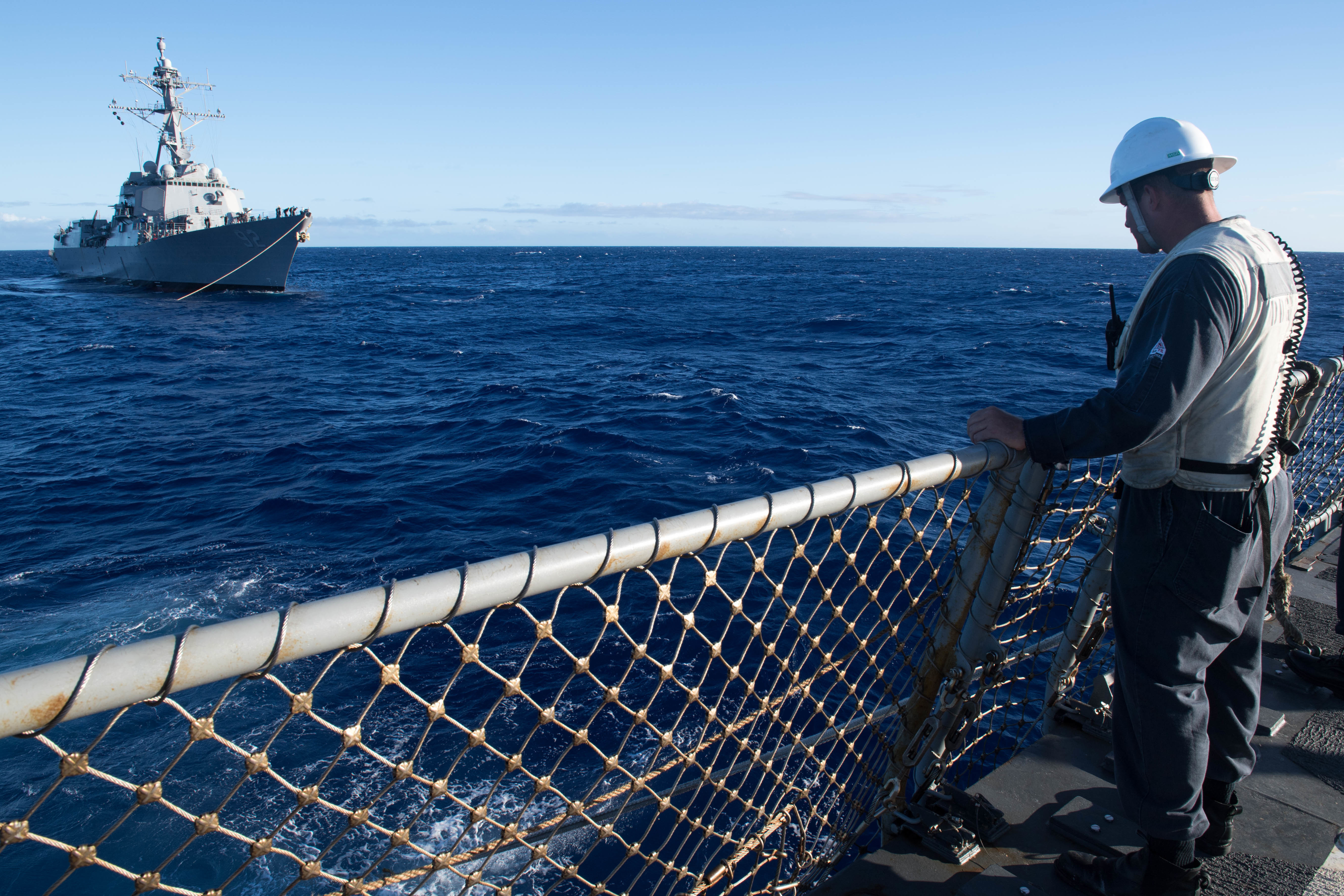
This post has been updated to clarify a provision that would change the timing of a warship’s Board of Inspection and Survey (INSURV) inspection. The bill calls for “minimal notice” for INSURVs, not “no notice.”
The Senate and House armed services committees agreed on several major reforms to Navy’s surface forces as part of the fiscal year 2019 National Defense Authorization Act in reaction to the two fatal collisions of warships in the Western Pacific.
The bill that left conference Monday includes provisions for a clean-sheet study on chains of responsibility for naval operational forces, the creation of a logbook system to record watches for surface officers, a review of the Navy’s qualification to stand watch, a limit to how long a ship can be forward deployed, changes to how ships are inspected and expand the responsibilities of the Navy’s acquisition chief to include force sustainment responsibilities.
The series of reforms combine proposals from Sen. John McCain (R-Ariz.) and Sen. Roger Wicker (R-Miss.)-sponsored Surface Warfare Enhancement Act of 2018 and House provisions that would more closely align Navy training with international mariner standards.
“As we have seen too often in recent months, the significant shortcomings in our Navy’s readiness can have disastrous results,” McCain said in a statement to USNI News in February. “The ship collisions… degraded the capabilities of our fleet, cost hundreds of millions of taxpayer dollars, and – most importantly – took precious lives. The status quo is unacceptable. Congress must provide the funding and oversight required to keep our military safe in peace and effective in combat.”
The Wicker-McCain provisions put into law several recommendations two internal Navy studies the service undertook in the wake of the death of 17 sailors from two separate collisions with merchant ships in the Western Pacific.
In total, the Navy found 111 areas to improve the safety and readiness of the surface force based on findings from studying the lapses that led to the two collisions and are currently working internally on a series of reforms via a group led by Vice Chief of Naval Operations Adm. Bill Moran and Under Secretary of the Navy Thomas Modly.
The measures, now in the final conference bill, are expected to pass with the larger NDAA later this year.
The provisions include:
- A complete clean sheet review of command and control responsibilities of operational forces. The Navy studies found poorly defined chains of command contributed to readiness lapses in the Western Pacific that were contributing factors to the collisions.
- Both committees agreed that officer of the deck, engineering officer of the watch, the officer in charge of a ship’s combat information center and the conning officer log their hours on watch like naval aviators do with flight hours. The log travels with the officer through their career. Additionally, the bill orders a review of the adequacy of the qualifications for the positions.
- Conducting the congressionally mandated Board of Inspection and Survey (INSURV) readiness inspection with minimal notice and require the Navy produce an unclassified report of its findings for the condition of the ships in the aggregate. “These inspections should be ‘come as you are’ and provide an accurate representation of the material condition of each vessel without the benefit of dedicated inspection preparation,” read the conference report. The Navy classified INSURV results about 10 years ago and this provision would keep individual ship reports classified.
- The Navy must maintain the minimum number of recommended crew per established guidelines for each forward deployed ship. If the levels drop, the Secretary of the Navy must notify Congress.
- The bill includes a limit on forward deploying certain warships for more than 10 years. For ships that have been forward that long or longer, the Navy has three years to change the ship to a U.S. homeport.
- The Government Accountability Office is ordered to study creating separate career paths for surface warfare officers. The House bill proposed the Navy to establish two career paths for surface warfare officers – one for ship engineering systems and another in ship operations and combat systems. Instead, the conference bill elected to study the issue.
- The bill calls for a “report on optimizing surface Navy vessel inspections and crew certifications.”
- The bill would also call for a study that would see if the Navy could more closely align its training standards with the International Convention on Standards of Training, Certification and Watchkeeping (STCW) qualification process.





